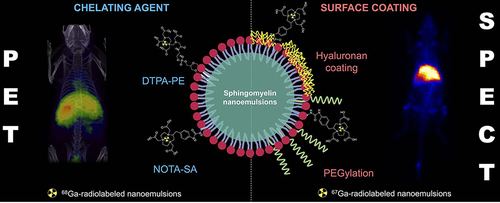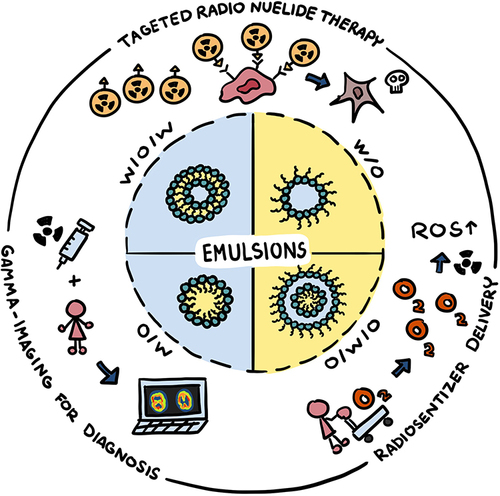Figures & data
Figure 1 Schematic diagram showing different kinds of drug-loaded emulsions classified by their dispersed and continuous phases: oil-in-water (O/W), water-in-oil (W/O), and water-in-oil-in-water (W/O/W).

Figure 2 Re-188-ECD Lipiodol® emulsion with thermal responsive characteristic, (A) thermal responsive triblock copolymer emulsifier, (B) Illustration of the emulsion preparation, (C) Re-188-ECD Lipiodol® targeting N1-S1 hepatoma-bearing rats.
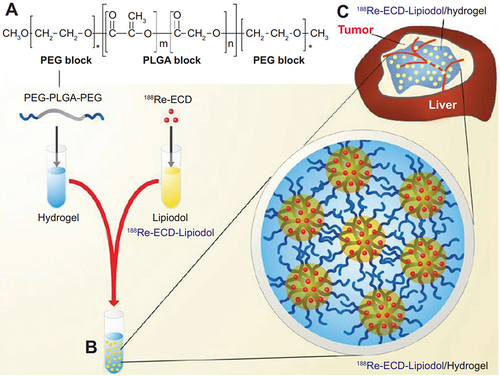
Figure 3 Perfluoro carbon (PFC) encapsulated emulsion with different emulsifiers (graphene oxide (GO), sodium dodecyl sulfate (SDS), and TWEEN20).
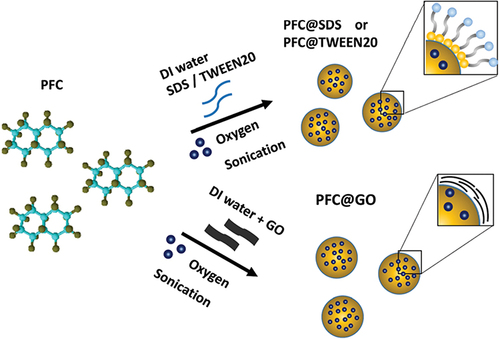
Figure 4 (a) preparation of bioinspired perfluorocarbon-based oxygen carriers with concave shape and deformable shell consisting of 1) Shirasu porous glass (SPG) emulsification to generate size-controlled emulsion, 2) evaporation-induced phase separation to form spherical and deformable PFC-based OCs (DFCs), and 3) solvent-induced shape change to obtain the “concave-shaped” DFCs (cDFCs) and (b) SEM images of DFCs, cDFCs, and human red blood cell (hRBC).
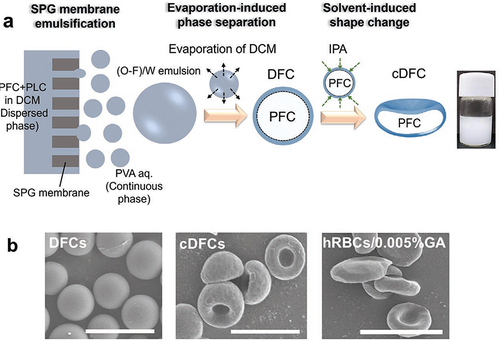
Figure 5 Ga-67 and 68-radiolabeled sphingomyelin nanoemulsions using DTPA-PE and NOTA-SA as chelating ligand for PET and SPECT imaging and the demonstration of nanoemulsions surface modification by polyethylene glycol (PEG) and hyaluronic acid.
